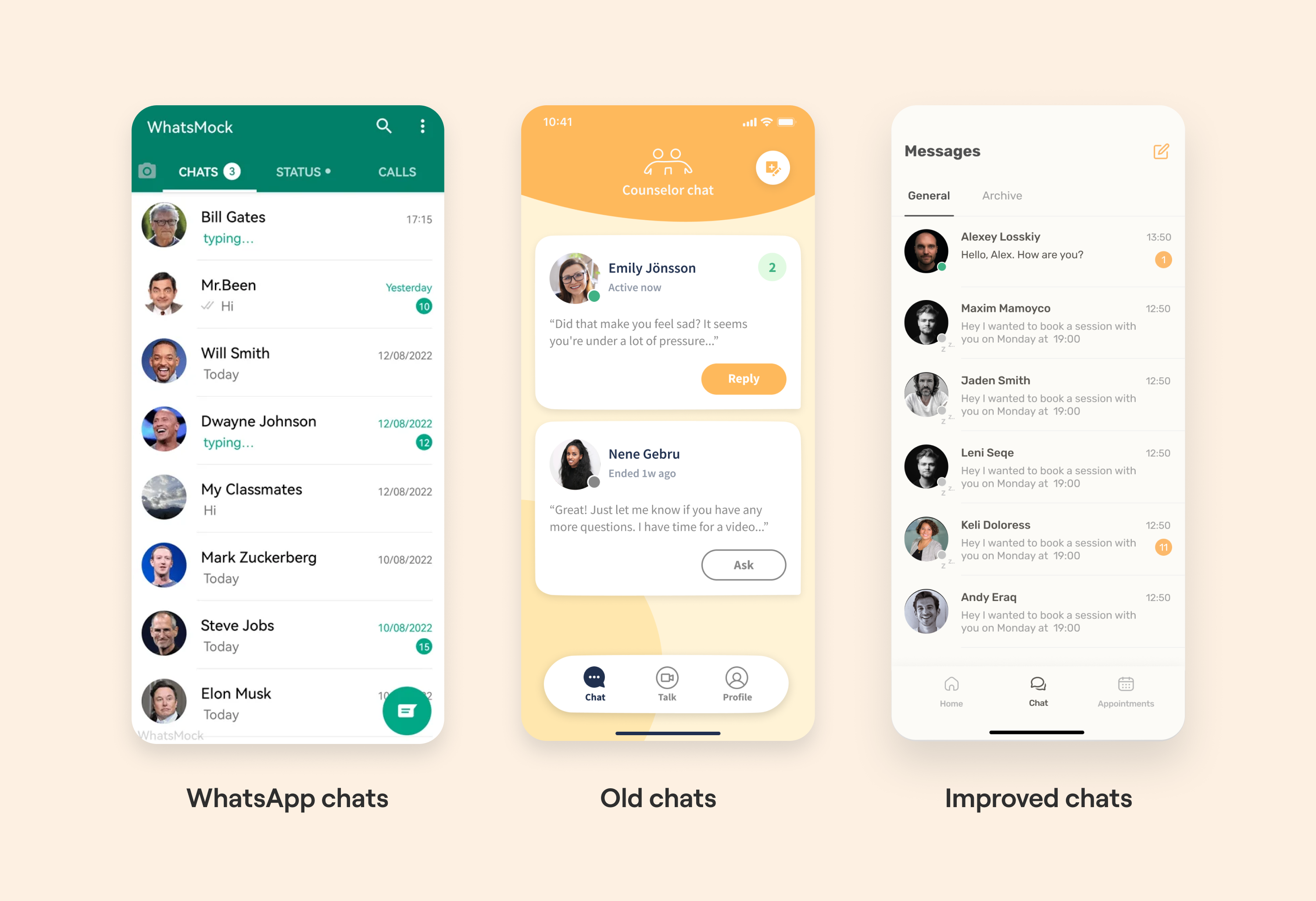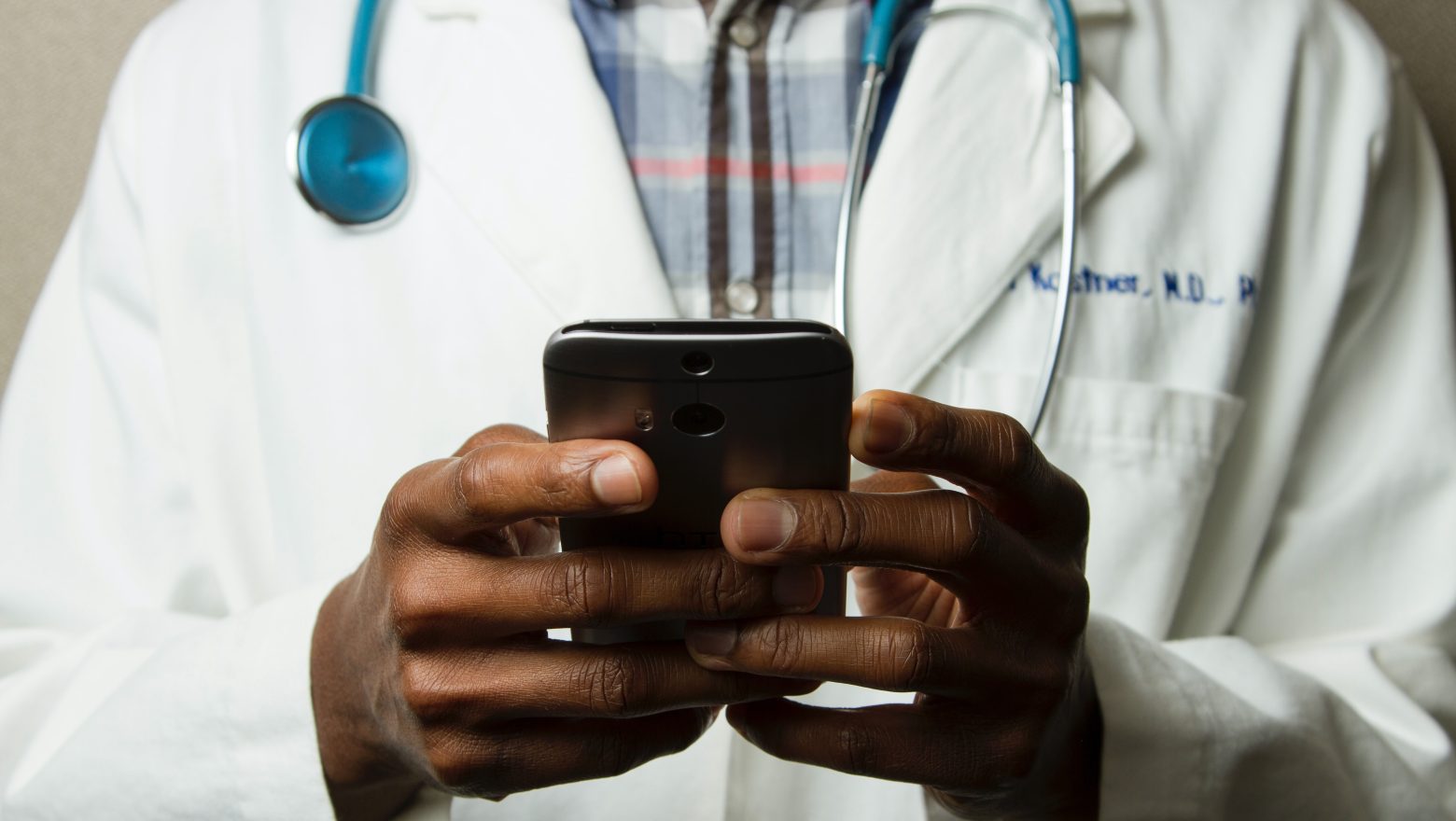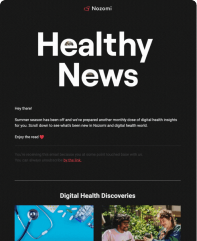You didn’t build your healthtech product just to sit in the App Store.
But here’s the catch: patients don’t engage just because your product works. They engage because it feels right—safe, relevant, human.
In this guide, we unpack how to design for real patient engagement and outcomes. Not theory—practical tools you can use now:
1. How to turn content into behavior change using the Zeigarnik effect
2. How to make your app feel emotionally intelligent, not clinical
3. Why AI onboarding should work like Netflix, not a hospital waiting room
4. And what Pokémon GO can teach us about adherence
If you’re building a digital health product that’s meant to change lives, this is how to make sure people stick with it.
In this article, we share real-world insights and explores how thoughtfully designed digital health products—powered by AI and behavioral design—can increase trust, engagement, and real value for patients.
P.S. By the way, we’ve also included a list of additional tactics focused on engagement, retention, and other key metrics—check it out below!
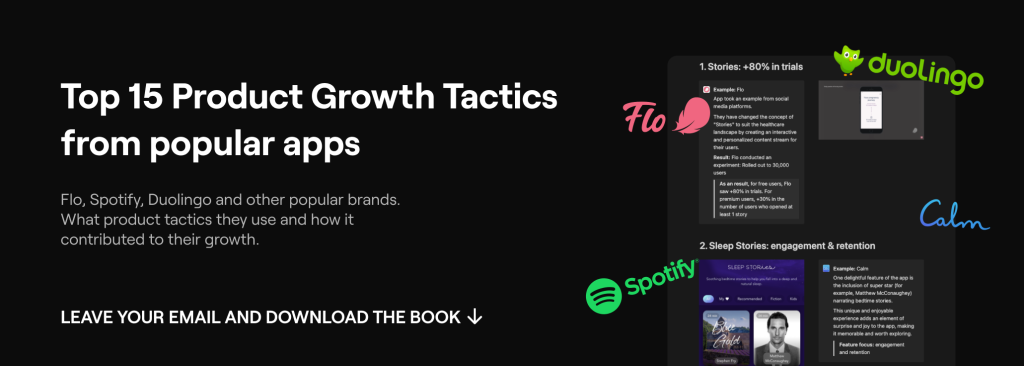
Top 15 Product Tactics that use popular Digital Health Brands for Growth
I. Interactive Education & The Zeigarnik Effect
1. Micro-doses, not manuals.
Content should be short, digestible, and easy to consume even when users are stressed.
Users aren’t coming in with a calm, open mind—they’re often anxious, tired, or overwhelmed. Long blocks of content or generic PDFs don’t work in these emotional states. Instead, break content into micro-doses: small, focused interactions that guide the user step by step.
Think daily nudges, 2-minute reads, swipeable tips, or a single calming sentence. It’s not about dumbing things down—it’s about delivering the right information at the right time in a way the brain can actually absorb.
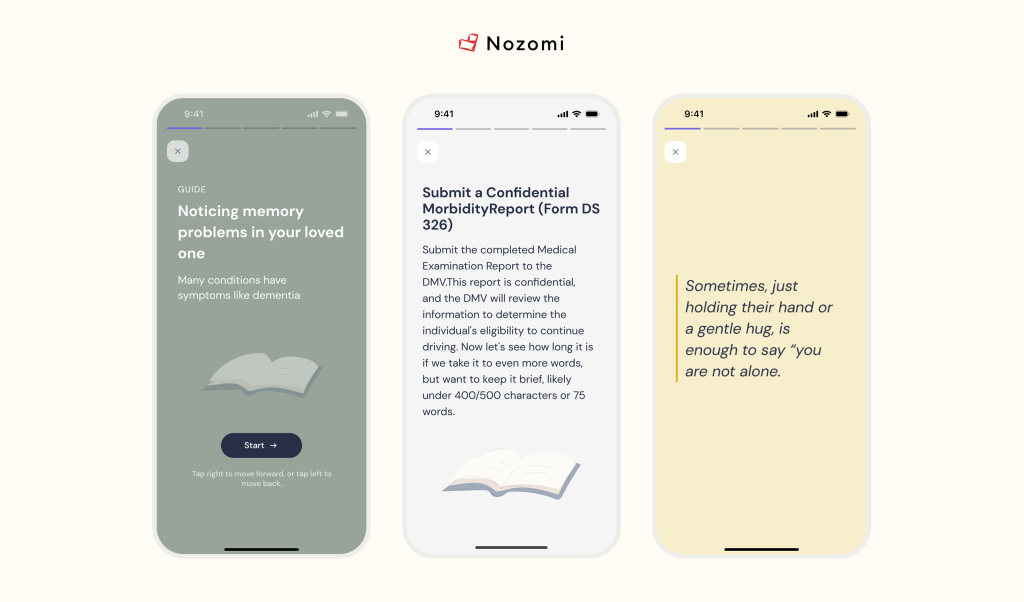
2. Emotionally supportive tone
Avoid clinical coldness. Use warm, encouraging language to reduce anxiety and create a sense of care—because how you say it matters just as much as what you say.
Most digital health products still sound like a hospital form. But the right tone can make or break user trust. Use language that’s warm, calm, and human—especially during onboarding, alerts, and error messages. Instead of “Your session has expired,” say “We saved your progress—let’s pick up where you left off.”
Emotional tone is your product’s bedside manner. Done right, it lowers anxiety, increases perceived safety, and builds loyalty.
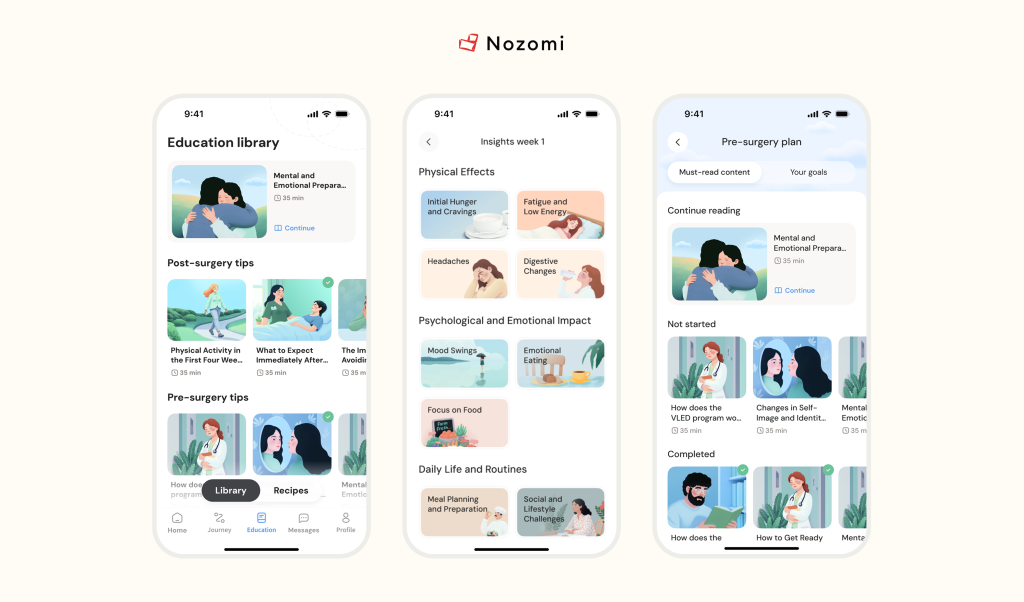
3. Personalization based on symptoms
Patients receive content and guidance tailored to their current condition, making the experience feel relevant, timely, and supportive.
Generic content is easy to ignore. But when your product recognizes what someone is going through—whether it’s insomnia, panic attacks, or recovery from surgery—it can deliver guidance that feels directly relevant. This kind of real-time personalization (driven by symptom tracking, check-ins, or integrations with wearables) helps users feel seen.
It also improves clinical outcomes, because the support is aligned with where the patient actually is in their journey—not where a one-size-fits-all script thinks they should be.

II. Tribe Mentality: real people talk
1. Show social proof
Our friend Nick didn’t want to use a health app because he wasn’t sure if the treatment program was reliable and safe for him.
Authoritative methods and innovative approaches should be substantiated by something, as users might get the feeling that they are guinea pigs. Therefore, side effects or a lack of results can still exist.
By showcasing the proficiency and credentials of these specialists, apps enhance the trustworthiness and dependability of their content, offering users reassurance that they’re accessing expert guidance. Or you can display encouraging messages that reassure the patient their condition is normal.
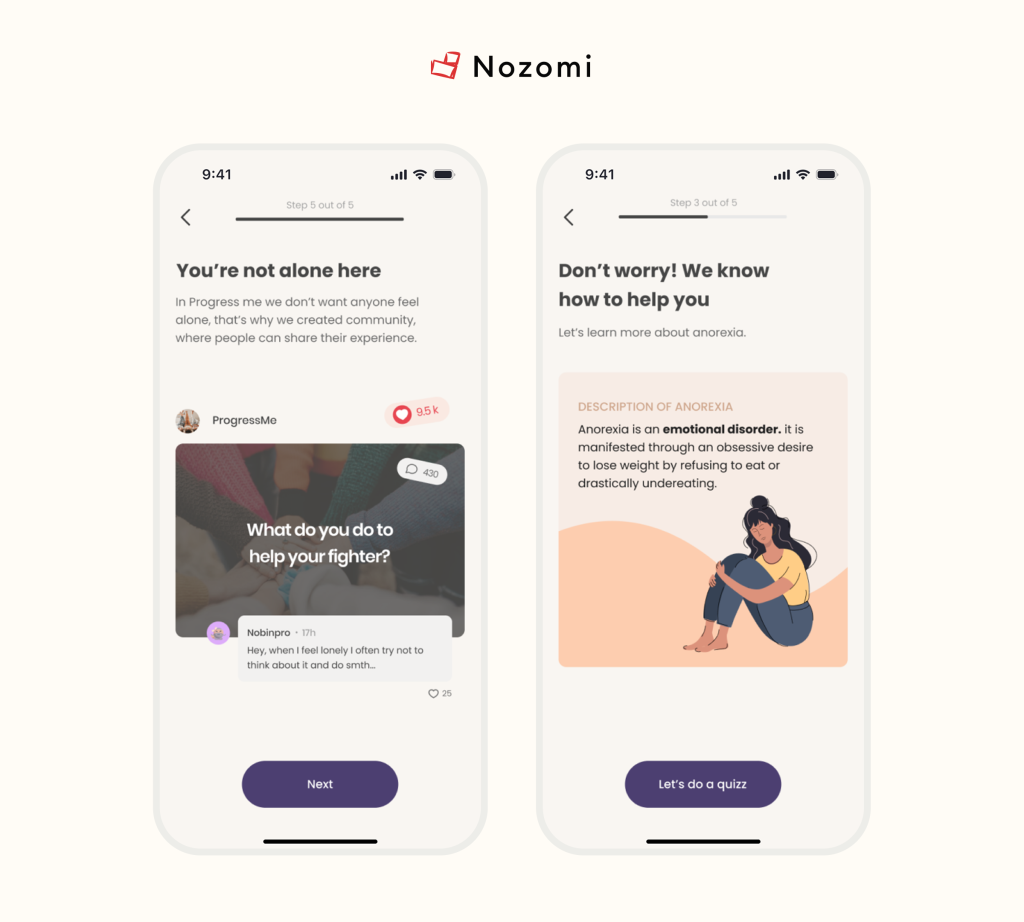
This contributes to emotionally intelligent design in mobile healthcare apps. Users gain greater confidence in their choice to interact with the app, assured by the positive experiences of others and the endorsement of qualified professionals.
Social proof becomes a potent tool in dispelling user uncertainties, ultimately enhancing the conversion rate of the customer journey.
2. Create communities
Build platforms focused on underserved patient groups dealing with diseases. Create hyper-specialized ecosystems where patients, caregivers, and providers can connect. These niche markets are often overlooked but can lead to high user loyalty and advocacy.
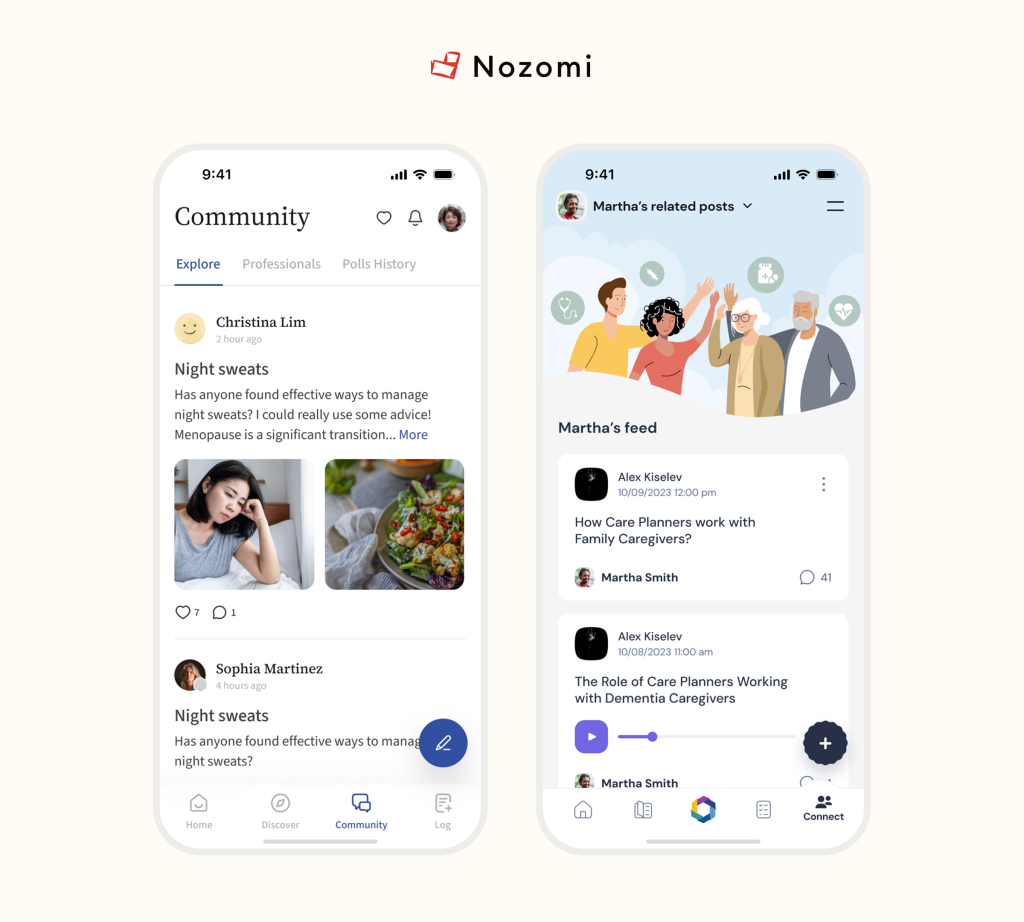
Incorporate social features where users can share their progress and challenges with friends or a community. Peer support can be a powerful motivator.
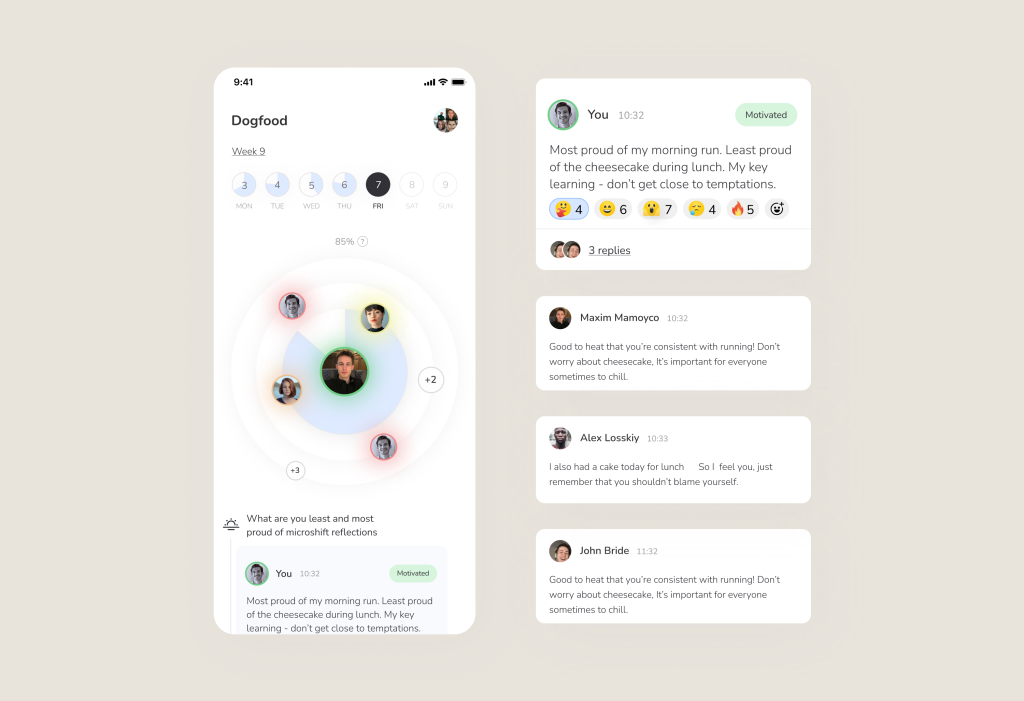
1. Enable group challenges or shared goals to foster engagement. For example, a fitness app could allow users to join step challenges with friends, or a mental health app could offer support groups based on shared experiences.
2. Provide personalized recommendations based on community interactions. If a user frequently engages with stress-relief content, suggest related mindfulness exercises or forums where similar topics are discussed.
3. Allow users to celebrate milestones together. Features like shared achievements, virtual high-fives, or progress updates can create a sense of accountability and encouragement.
III. Be Invisible: interaction experience
Speaking about interaction experience, we mean not only default animations that are used in every app. Everyone already knows their importance — they provide feedback, improve navigation and user engagement.
We want to dwell on small interactions and tricks which help to humanize the app. There is not much to say here — examples speak for themselves.
1. Haptic Feedback: one effective way to engage users on a deeper level is through haptic feedback. By incorporating tactile sensations, such as gentle vibrations or touch responses, digital health apps can create a more immersive and engaging user experience.
For example, you can implement vibrations for different scenarios:
1. When a task is completed, there is a long but smooth vibration that emphasizes that the user has accomplished something positive.
2. When an error occurs, the vibration is sharp, which prompts the user to pay attention to what should not be done.
3. A gentle vibration is used for important buttons like “submit form” in a section. The goal is not yet fully achieved, but a positive foundation has been laid.
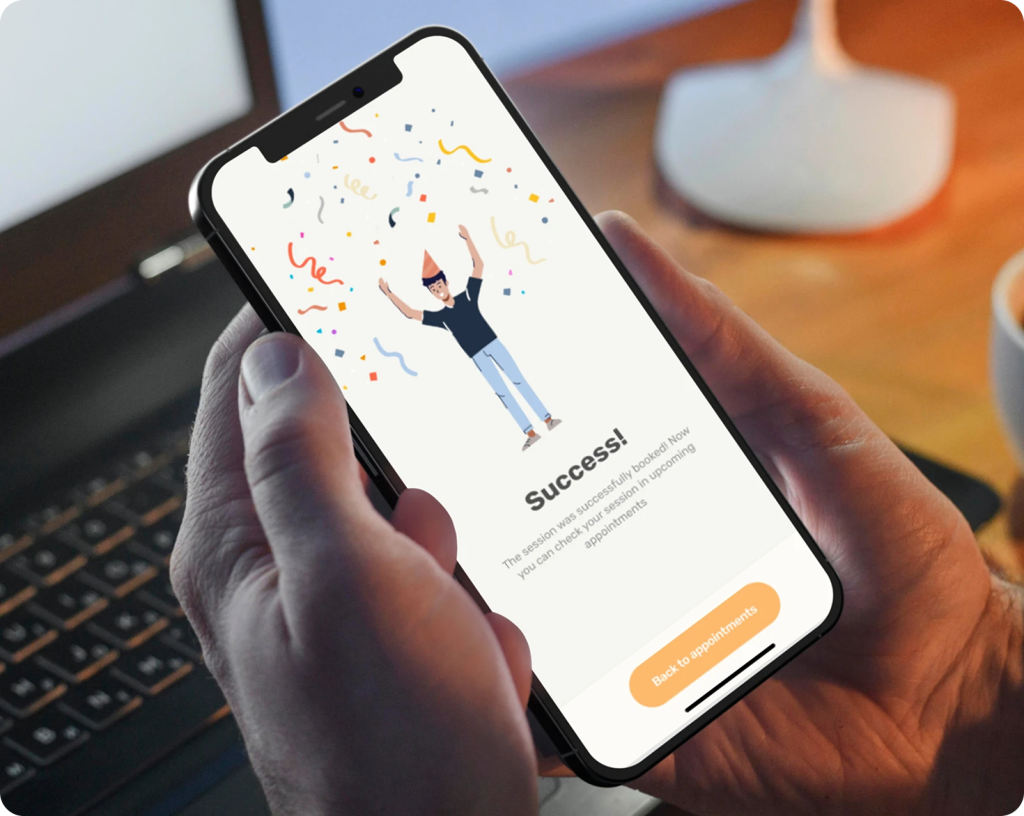
This approach makes the user more conscious and therefore more engaged. And it reduces the risk of high user churn.
2. Sound Design: it plays a crucial role in setting the mood and creating emotional connections in digital health apps. Thoughtfully chosen sound effects, calming melodies, or motivational cues can evoke positive emotions and help users feel more connected to the app.
For instance, incorporating soothing sounds during meditation sessions or cheerful tones when users achieve milestones can enhance the overall user experience and foster emotional engagement.
Many apps in the digital health industry use sound to increase the sense of presence. Sound can help to create a special atmosphere in the app. Utro, an app with habits for boosting productivity, uses interesting sounds while clicking on buttons and music. Check out here.
It’s considered that a more full aesthetic pleasure can be reached by influencing 3 more senses. The right combination of sound, haptic feedback and visuals will make the user experience unforgettable.
3. The Grandma Test: Making Tech Feel Familiar
If you don’t want users to adapt to your product at all but instead navigate it intuitively from the start, you need to conduct interviews with your target audience and find out which apps they already use.
For example, when I was developing a mental health app for schools, I interviewed Swedish students and discovered that most of them use WhatsApp.
Since our app included a chat feature, we adopted a WhatsApp-like design. As a result, users picked it up very quickly. In fact, the percentage of users who adapted to the navigation easily rose from 57% to 84%.
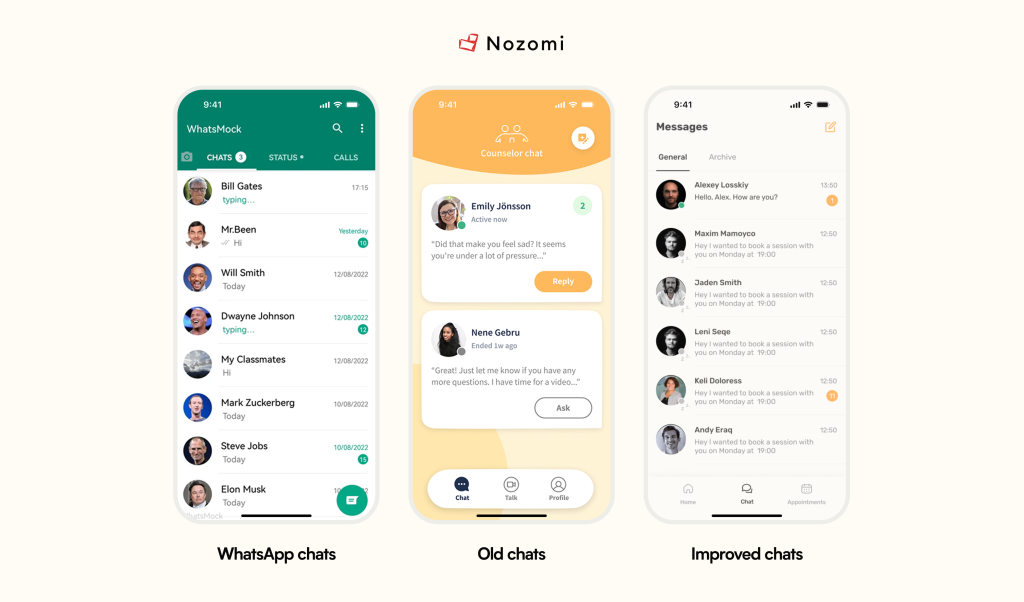
When these elements are combined in the right way, they create an immersive user experience that is truly unforgettable.
IV. AI & The Netflix Trick
1. Generative AI in Medical Content Creation
Generative AI tools, such as ChatGPT, are being deployed to create patient education content, automate administrative tasks, and even assist in research by generating literature reviews or hypotheses. Compliance with regulations like the EU AI Act is critical in this domain.
Moreover, AI can even be used to generate images, significantly reducing design time. For example, we implemented a similar technology on practice:
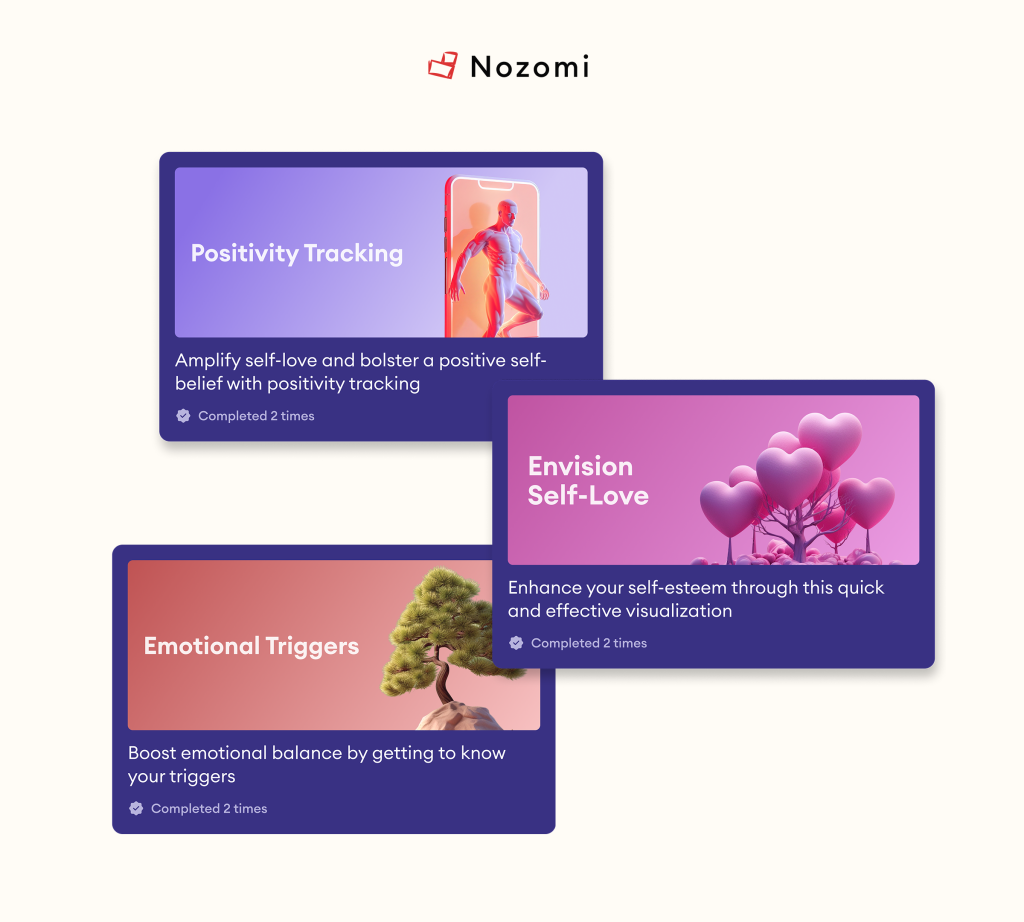
2. AI companions
AI can act as a chatbot for preliminary diagnosis, appointment scheduling, and answering frequently asked questions.
For example, Anil Gehi, MD, an associate professor of medicine and cardiologist at the University of North Carolina at Chapel Hill, conducted a test on GPT-4, yielding impressive results.
The professor provided the chatbot for a medical app with a patient’s recent symptoms and medical records, deliberately using advanced medical terminology to challenge it.
GPT-4 prescribed the same treatment course that he and other medical professionals would have recommended. When the process was repeated with other patients, the results remained accurate.
So they work like virtual health assistants. And they can be used in different scenarios.
For example, if onboarding feels like learning a new language, patients will opt out. Instead, AI introduces features gradually, just like Netflix suggests content based on past viewing behavior.
Example: a mental health app could start by asking a single question: “How’s your mood today?” Over time, it can introduce journaling, mindfulness exercises, or therapist matching—without overwhelming the user on day one.
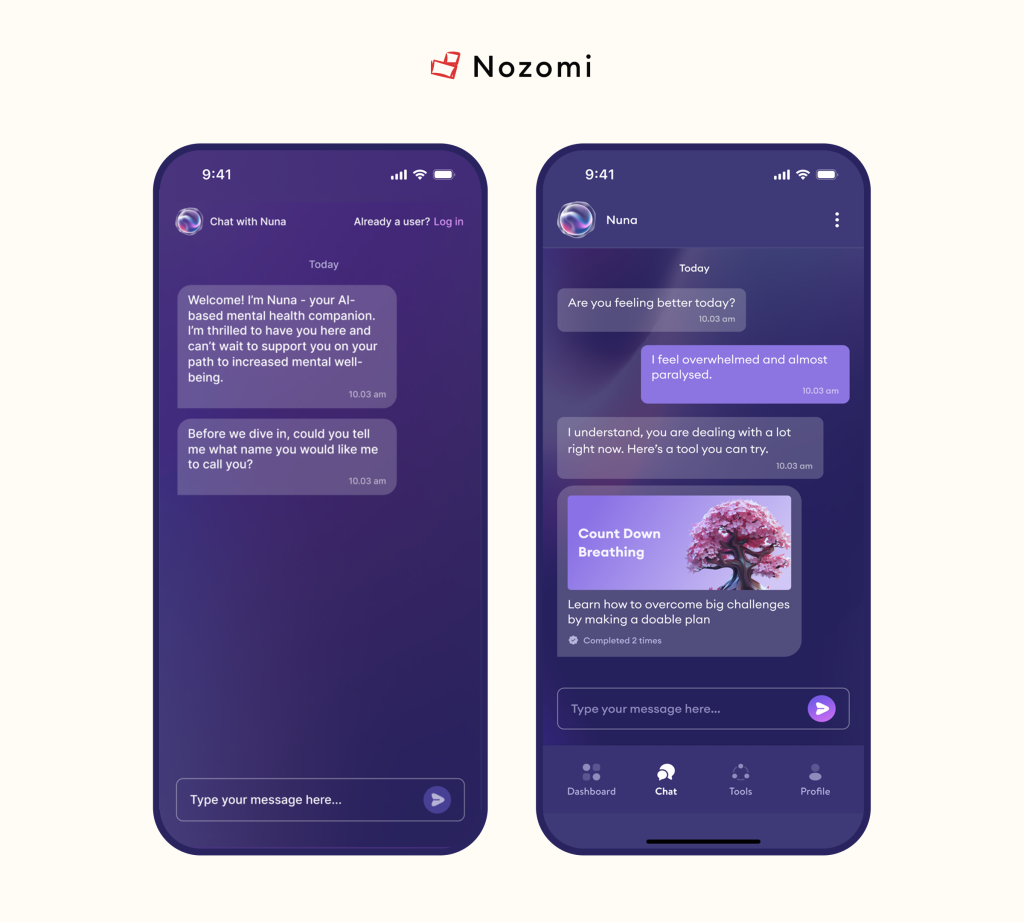
We even also make such apps with AI companions and can share advice.
What do we need to consider here? Firstly, AI must establish emotional contact. The best way to do this is to introduce itself and provide a clear call to action (CTA).
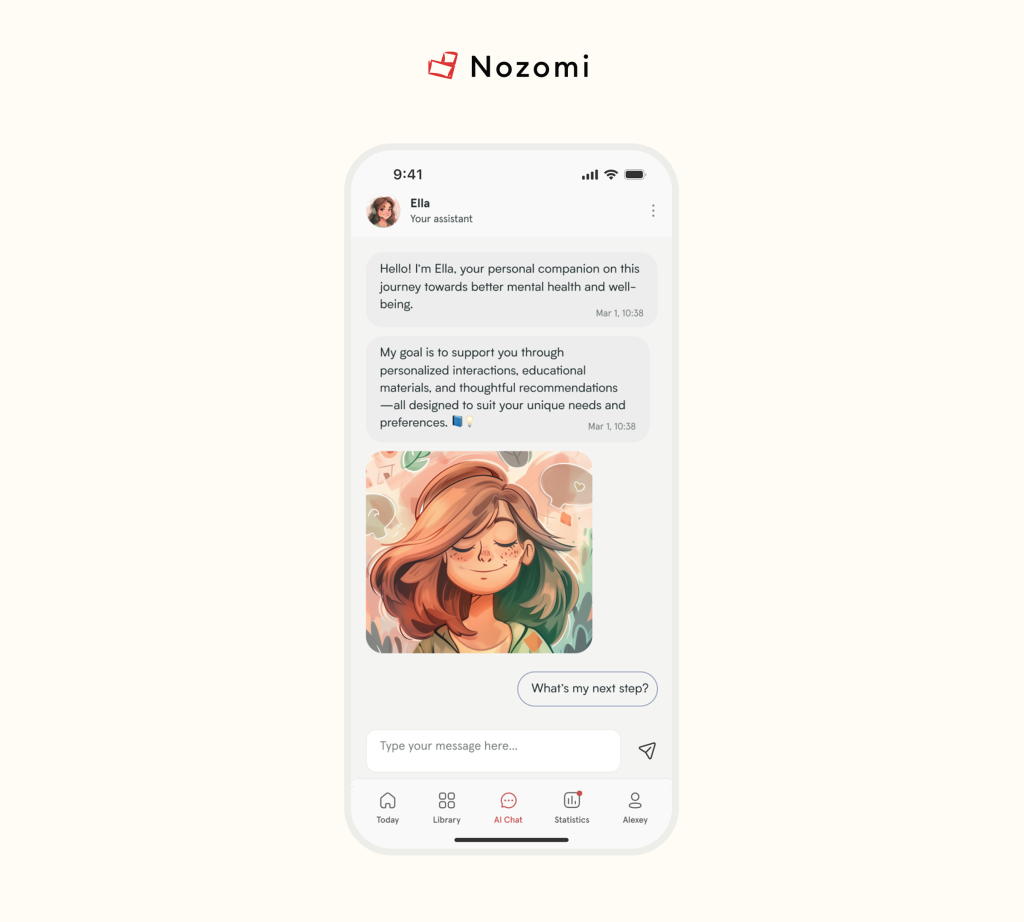
Secondly, limit the choices. Yes, many existential psychologists say that people don’t like to choose, and a large number will definitely increase cognitive load and lead to an increase in User Churn. Therefore, display on the interface the minimum number of most relevant options.
V. Behavioral Design & Patient Health Journey
To guide patients through their evolving health needs, we can develop personalized care plans and implement a framework that encourages proactive steps. The patient journey should encompass the following elements:
1. Comprehensive health profile
Offer a holistic perspective of an individual’s health and requirements through continuous data collection, including health assessments, wearables, and objectives.
This extensive health profile consolidates vital information about the individual’s medical history, current health status, lifestyle choices, and specific health objectives. By integrating data from health assessments and potentially wearables, alongside individual health goals, the platform can generate precise insights.
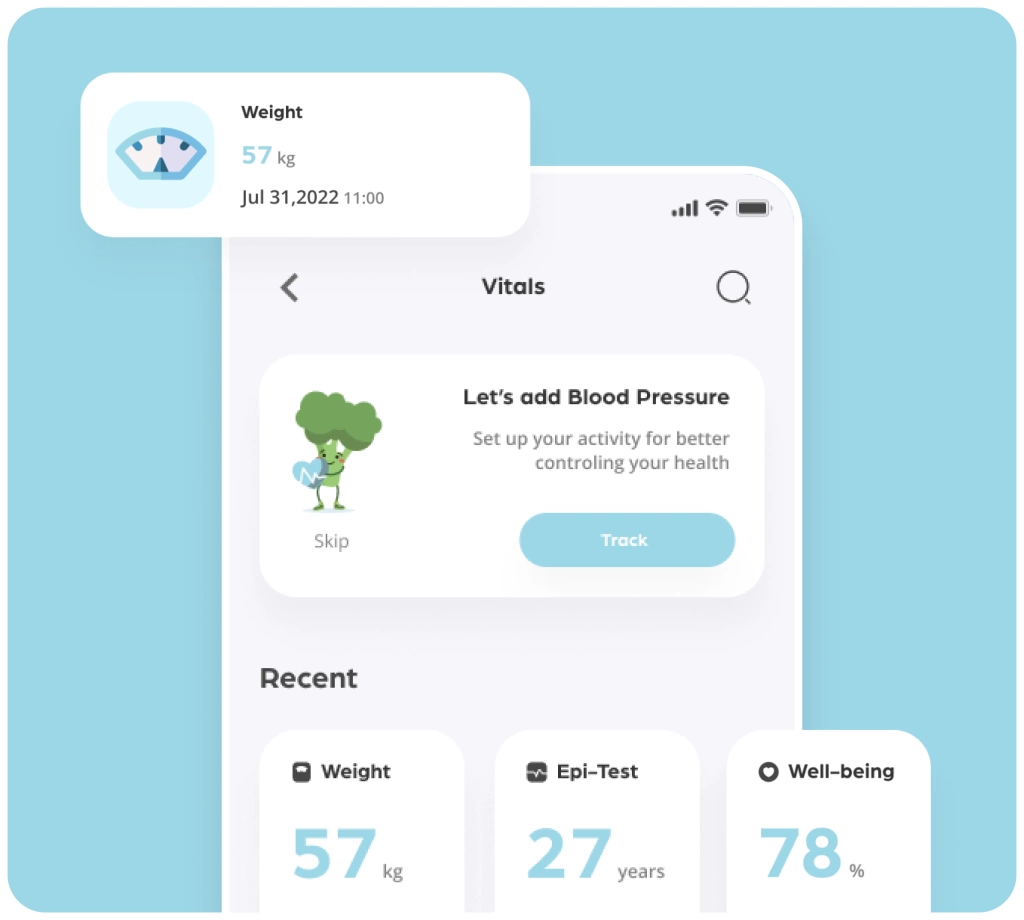
The ongoing data collection ensures the profile remains dynamically updated, mirroring the individual’s ever-changing health journey. This current information becomes pivotal in tailoring interventions, suggestions, and care plans.
It empowers both users and healthcare providers with an in-depth understanding of the individual’s health trajectory, enabling more informed decisions and targeted support.
In this manner, the digital health product will be adept at enhancing patient outcomes and bolstering patient engagement.
2.2 Tailored care plan
To formulate such a plan, you can employ personalized tasks in various formats that guide users along their journey. This creates a structured path.
Certainly, if your target audience includes elderly individuals, routine tasks in the form of notifications will be suitable. These notifications will contain specific reminders based on the personalization obtained through the health profile. For instance:
1. Drug interaction alerts. Furnish warnings regarding potential interactions between prescribed medications and over-the-counter drugs or supplements.
2. Dose adjustments. Recommend precise dosages based on factors like age, weight, gender, and specific health conditions. However, for more robust engagement, we require an engaging pathway, and tasks fulfill this role.
3. Check-Ins, Screenings, etc.
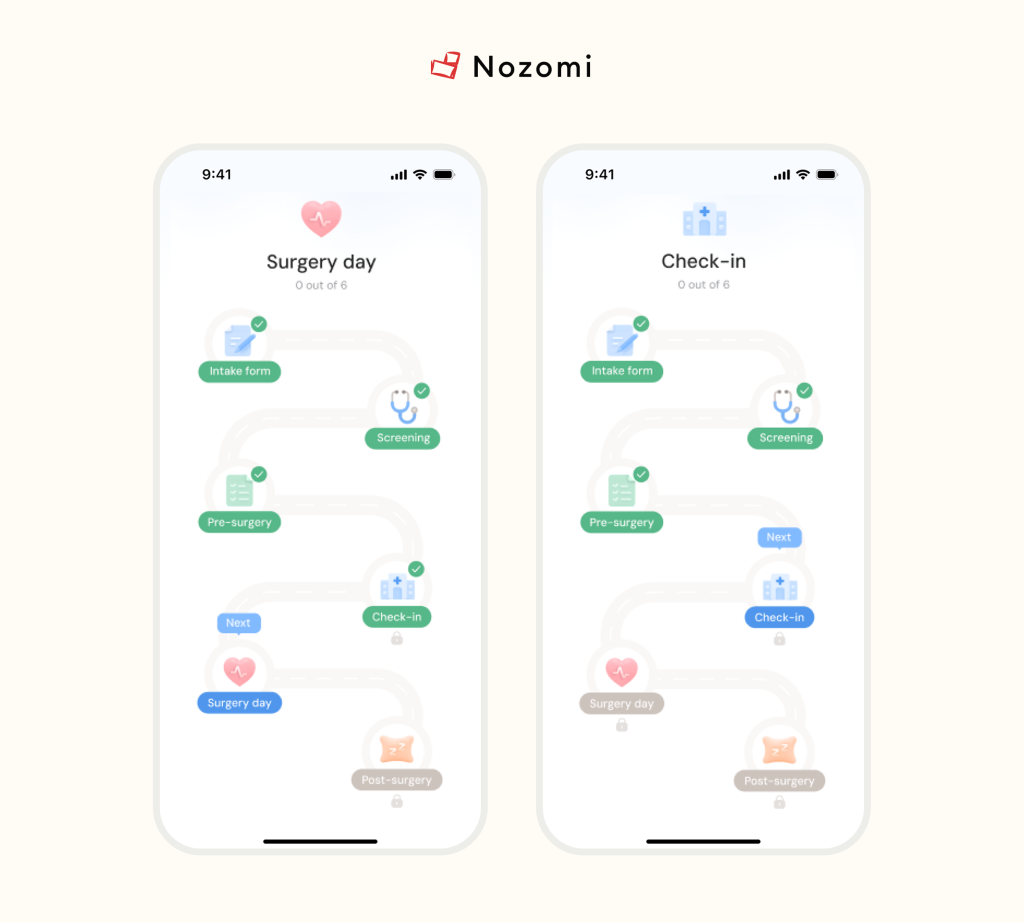
Rather than following a traditional treatment plan, patients embark on a mini-quest inspired by a captivating storyline, which leads them through the tasks outlined in their treatment plan.
These tasks include educational materials. This addresses the challenge of maintaining consistent illness management, a crucial daily requirement that is often overlooked, resulting in less-than-optimal retention and adherence.
And bonus: design your product interfaces or workflows to mimic natural systems (e.g., the way the human brain processes decisions). This creates intuitive solutions that patients and clinicians can easily adopt.
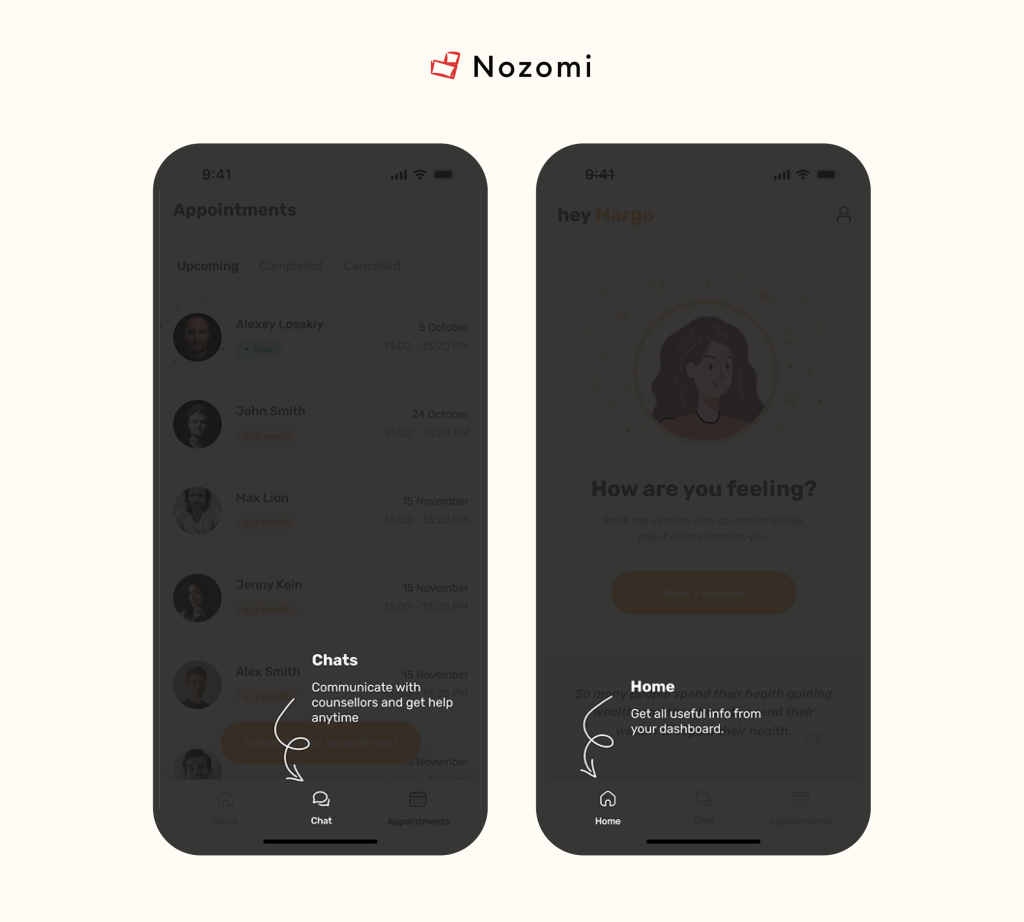
VI. Health as Play & The Pokémon GO Principle
Integrate subtle nudges based on behavioral economics into your app or platform, like rewarding users for small wins or reframing tasks to feel less overwhelming (e.g., “walk 100 more steps today to meet your record”).
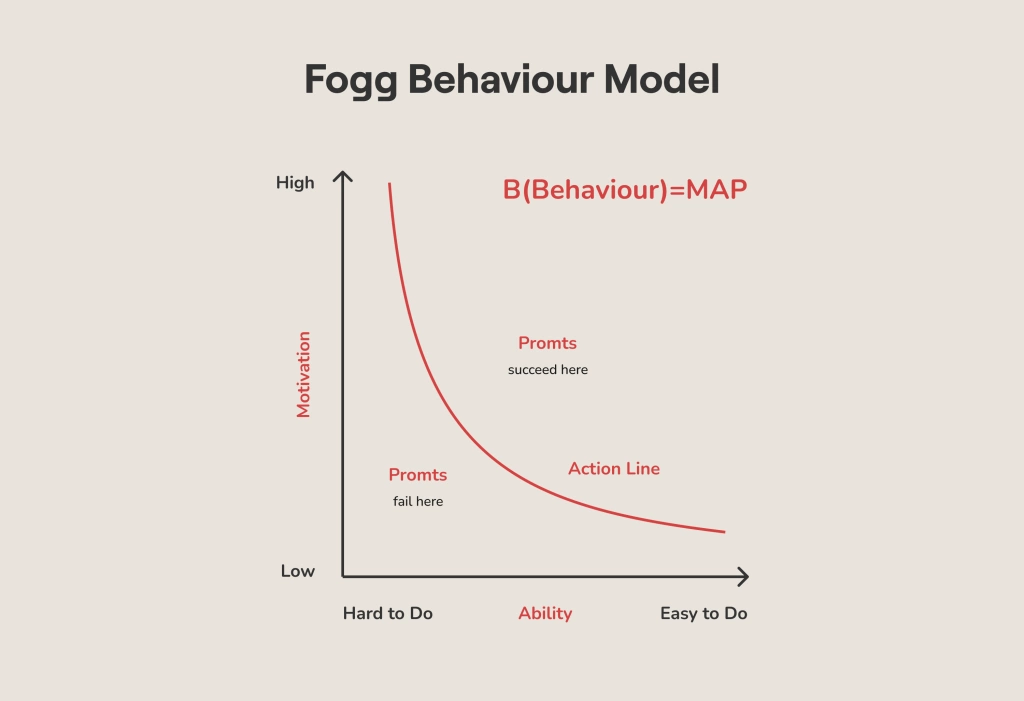
Image Credits: The Fogg Behavior Model
1. Social Elements: Avatars, Achievements & Leaderboards
Give the user the ability to personalize their experience and Treatment Journey.
Example:we used game elements and mechanics to create a more interactive and engaging user experience. This includes reward systems, achievements, leaderboards & rankings.
In the image below, we provided the user with the opportunity to create their own avatar, creating a sense of ownership (improving the character = improving oneself). At the same time, we create motivation through a system of rewards and achievements that users can earn, for instance, by creating topics and providing answers in the community.
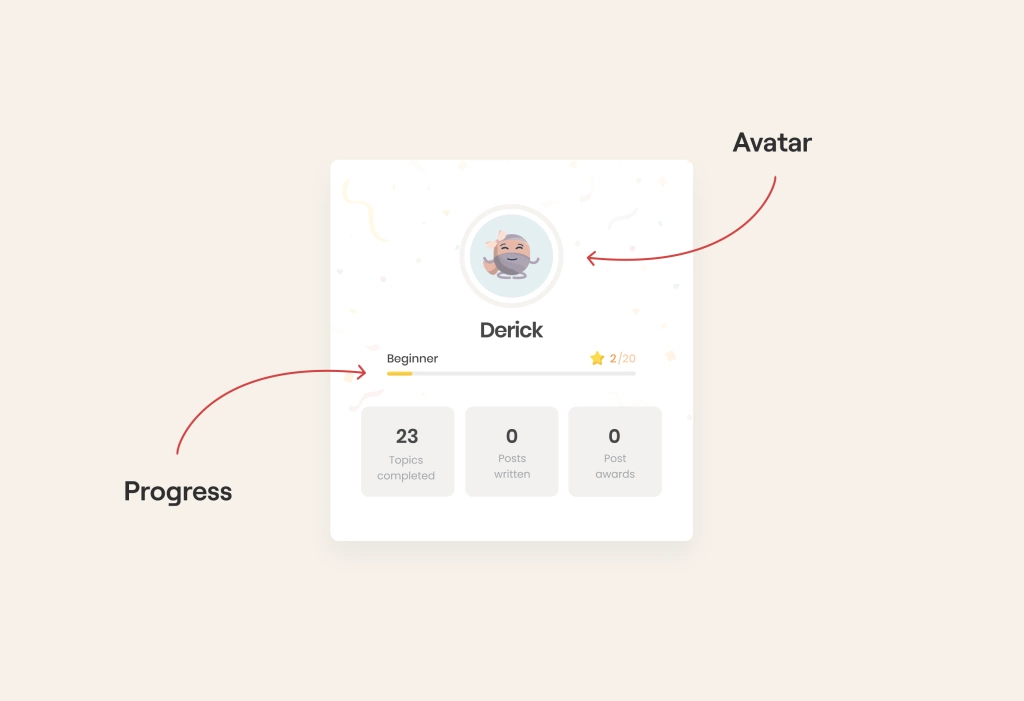
Thus, we increase User Engagement by allowing them to create their avatars and fostering a sense of ownership. At the same time, through their content contributions (users creating topics, not us), other users are more likely to return to the app, which enhances overall Retention.
Let’s take a closer look at the reward system in the image below:
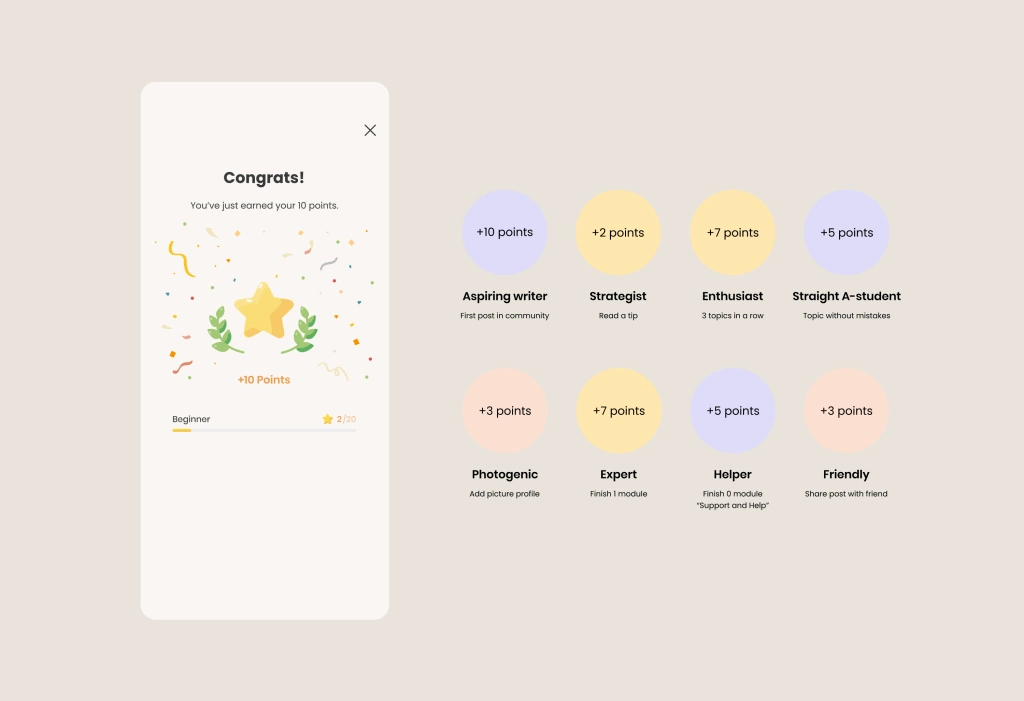
Here we have added a complex system that rewards the user for increasing their own progress. You may have heard that computer game lovers very often replay games just to get an “achievement”.
And the trick here is that in order to increase this very progress and get an “achievement”, you need to go into the product more often. Therefore, we repeat once again that this is a Must Have for increasing the Retention rate and related indicators that affect revenue (LTV, ARPPU, etc.)
How does it work, in more detail? What ways can such gamification be used in the healthcare industry?
The application provides the user with certain information, a task, a questionnaire, etc. However, in order for the user to spend his time on your application, they need to be encouraged.
Yes, if you provide the user with quality information, this in itself encourages them to use your product. But nowadays, users have become more choosy and our task is to give them new emotions and stand out from other competitors.
Having received the necessary information from the user, we thank the user for the time spent and choosing our product.
And HOW we thank them is most important: we load them with a number of awards, which are backed up by attractive animations/images. Thanks to this, the user receives a microdose of endorphins in the body and the realization that we value their time.
So, what tasks and quests can exist?
2. Tasks, Quests & Questionnaires
Many gamification elements are intertwined, making it challenging to examine them separately. Therefore, we will talk about the relationship of tasks /quests/questionnaires and storytelling with progress.
About questionnaires: one of the simplest ways to engage users is to conduct surveys.
Surveys have various purposes, such as assessing health levels, identifying health issues based on symptoms, or testing knowledge on a specific topic. In such cases, we shouldn’t forget to reward users with the same “+500 experience” for completing the test because it requires real effort and motivation to do so.
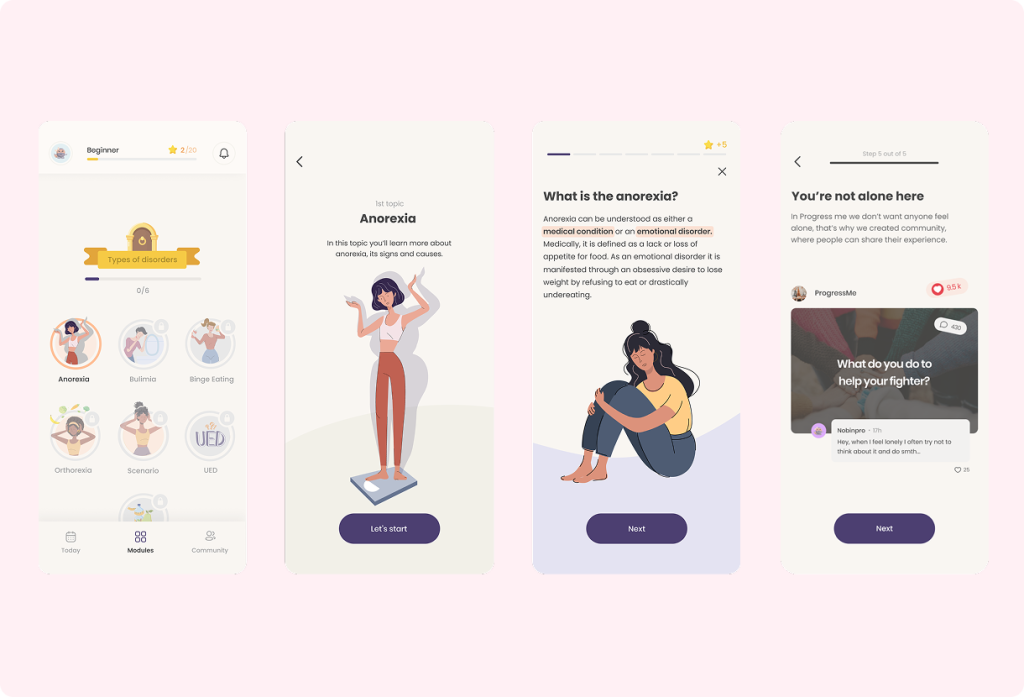
In the picture above, we showed what such a gamified process looks like: choose a problem and memorize its description & symptoms -> take the test -> “Wow, you’re smart, here’s the experience!”
Moreover, for each completed test, there is also progress accumulation, showing how many out of how many tasks are done.
For tasks & quests let’s showcase an example from our company’s internal application:
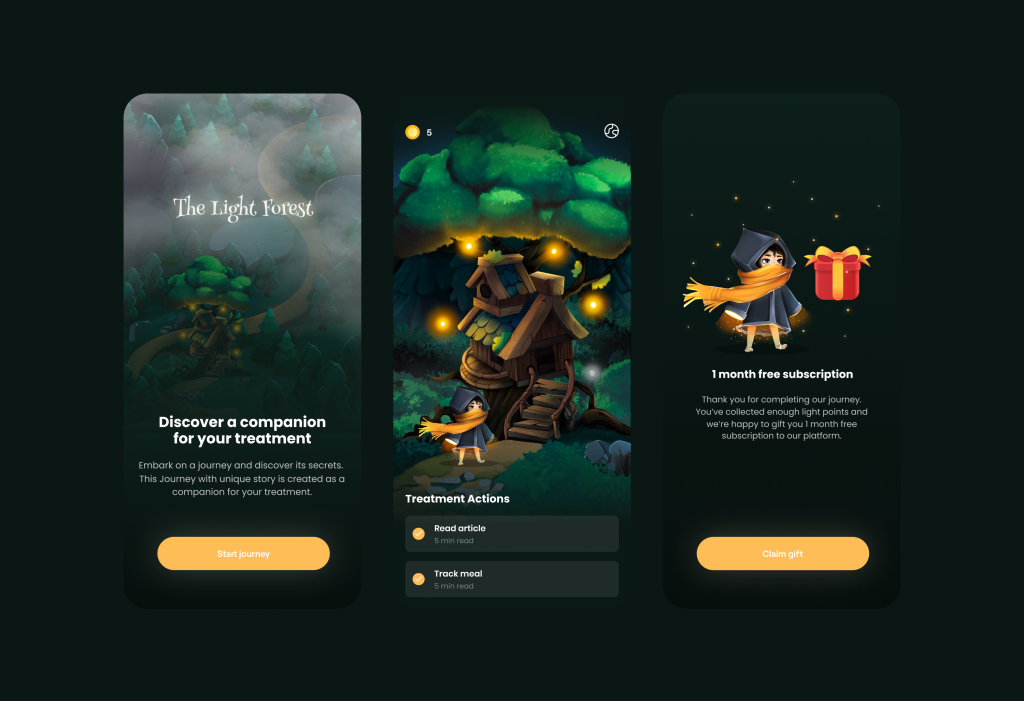
In our internal project instead of an ordinary treatment plan, we engage patients in their treatment through a compelling story.
The process is simple: instead of just following a treatment plan, patients embark on a mini-quest based on an engaging story and complete tasks outlined in their treatment plan.
These tasks include educational materials and serve as reminders for taking medication. They address the problem of managing illnesses, as it needs to be done daily, and many people simply forget (resulting in poor retention and adoption).
So, we create the motivation using gamification in healthcare apps, and now we need to cement the user’s desire to enter the app as if it were a daily ritual like brushing teeth.


